Brazil: Demographics Contributing to Lower the Unemployment Rate
From 2012 to 2019, Brazil’s labor force participation grew, peaking at 63.7% in December 2019. Post-pandemic, it has fallen to 62.1%, influenced by early retirements, fiscal aid, and demographic shifts as more people enter age groups with lower participation. Intragroup effects mainly drive participation rate changes, but the composition effect has reduced it by 1.3% since 2012. Similarly, the unemployment rate, now near historic lows at 7.5%, has also been influenced by demographic shifts.
The labor force participation has had a growing trajectory from 2012 to 2019, according to official data. However, after the pandemic, labor force participation has yet to recoup its historical high of 2019, now standing at 62.1%, which is 1.6% below the maximum of 63.7% in December 2019. Although there have been reasons such as early retirements during the pandemic period, the huge fiscal aid package from the government, and an increase in the level of social transfers, we believe demographic changes are also behind this movement. As the population ages into groups where labor force participation is lower, such as those above 60, labor force participation also diminishes.
Figure 1: Labor Force Participation Rate (%)
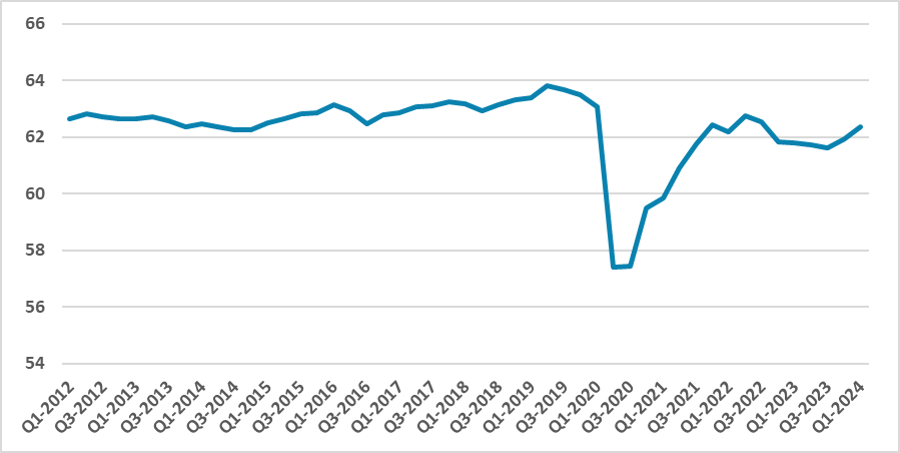
Source: IBGE
To verify this, we applied a decomposition of the variation in labor force participation into two effects. The intragroup effect is related to changes in the participation rate within certain age groups, while the composition effect is related to the effects of people moving into different age groups.
 In this analysis, TP is the participation rate and fi is the weight of the population group i in the whole population. We divided the Brazilian population into the following age groups: 14 to 17; 18 to 24; 25 to 39; 40 to 59; and over 60.
In this analysis, TP is the participation rate and fi is the weight of the population group i in the whole population. We divided the Brazilian population into the following age groups: 14 to 17; 18 to 24; 25 to 39; 40 to 59; and over 60.
Figure 2: Decomposition of the Variation of the Labour Force Part. (%, Cumulative from 2012)
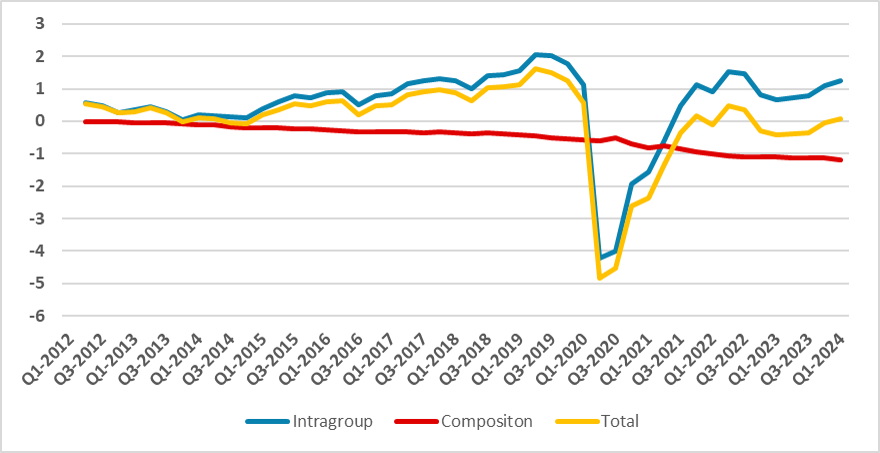 Source: Continuum Economics
Source: Continuum Economics
Looking at the cumulative impact from 2012, we see that the main driver of differences in the participation rate is related to intragroup effects. Depending on labor market conditions, participation rates increase or decrease. However, the impact of the composition effect has been growing and accounts for about 1.3% of the reduction in labor force participation since 2012.
Figure 3: Unemployment Rate
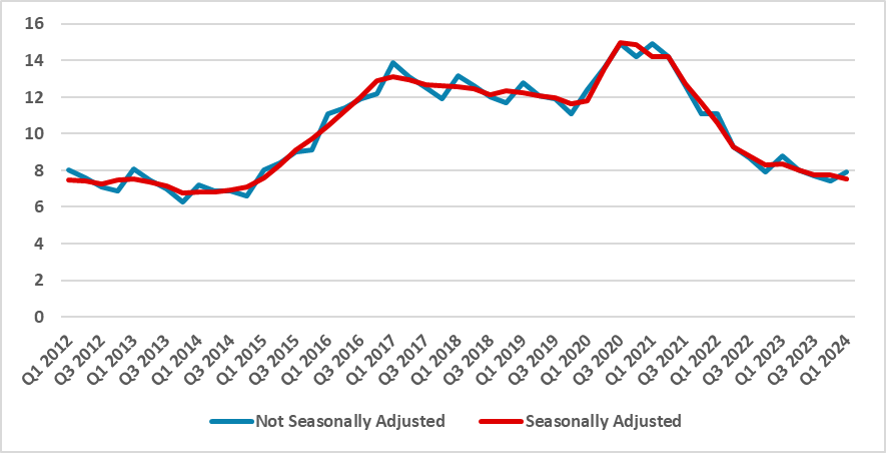
Source: IBGE and Continuum Economics
We can also expand this analysis to examine the unemployment rate. After a huge increase in the unemployment rate during the crisis of 2015-16, clearly driven by lower demand for labor, and the leap during the pandemic years, the unemployment rate has been diminishing since the post-pandemic period, almost reaching its historical low at 7.5%.
Figure 4: Decomposition of the Variation of the Unemp. Rate (%, Cumulative from 2012)
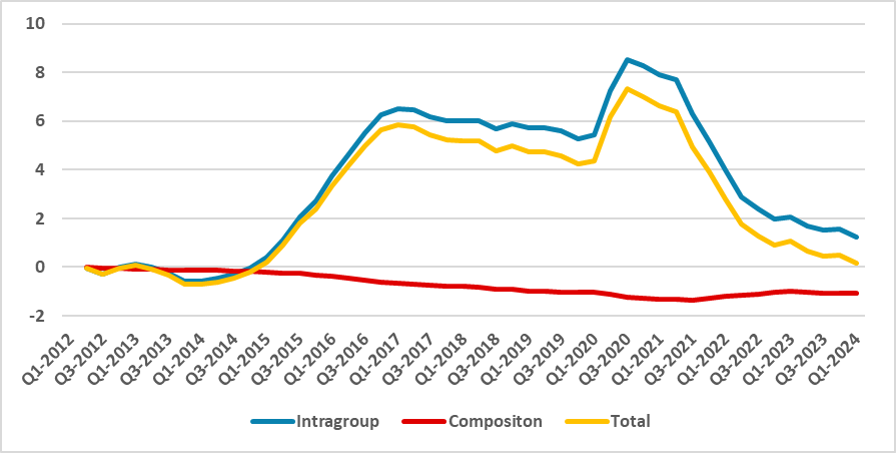
Source: Continuum Economics
Our analysis suggests that around 1.4% of the reduction in the unemployment rate is related to the composition effect. A counterfactual analysis indicates that if the population had maintained a similar age distribution to that of 2012, the unemployment rate would be close to 9.0% rather than the current 7.5%.
Figure 5: Counterfactual Unemployment Rate (%)
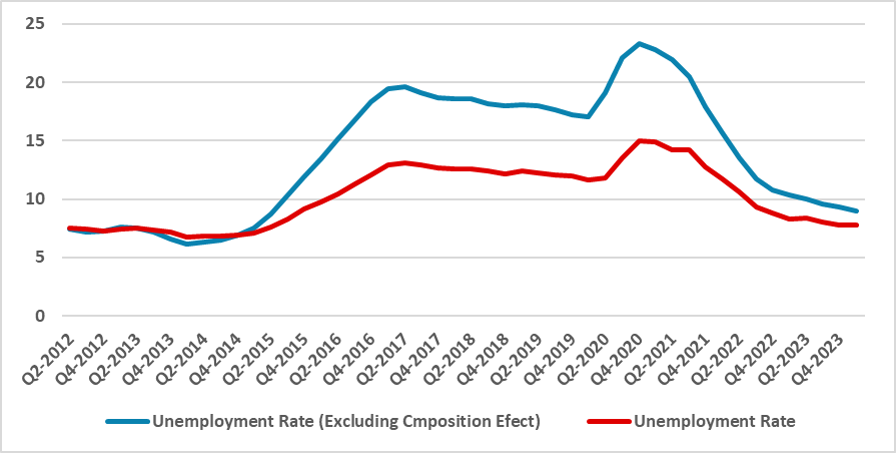
Source: Continuum Economics
We believe the Brazilian labor market is getting tighter not only because of increased demand for labor by Brazilian enterprises but also due to population aging, which is also a drag on supply. It will be interesting to see whether labor demand diminishes in the coming months to avoid a wage spike. However, we still believe unemployment will continue to diminish in response to the population aging.